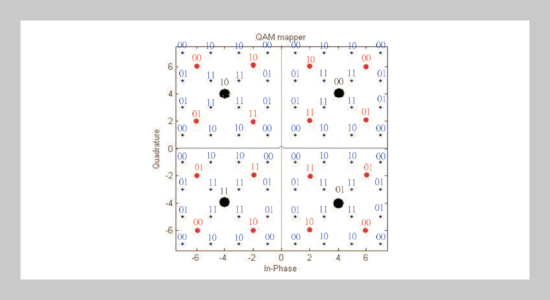Yang-Han Lee1, Hsien-Wei Tseng This email address is being protected from spambots. You need JavaScript enabled to view it.2, Wei-Chen Lee1, Liang-Yu Yen1, Yu-Lin Hsiao3, Jing-Shown Wu3 and Hen-Wai Tsao3 1Department of Electrical Engineering, Tamkang University, Tamsui, Taiwan 251, R.O.C.
2Department of Computer and Communication Engineering, De Lin Institute of Technology, New Taipei City, Taiwan 236, R.O.C.
3Department of Electrical Engineering, National Taiwan University, Taipei, Taiwan 106, R.O.C.
Received:
February 20, 2013
Accepted:
June 28, 2013
Publication Date:
September 1, 2013
Download Citation:
||https://doi.org/10.6180/jase.2013.16.3.08
In this study, we use hierarchical modulation technology to estimate the carrier frequency offset (CFO) caused by the Doppler effect; and hierarchical modulation has been implemented in the orthogonal frequency-division multiplexing (OFDM) system. Different threshold levels have been used to demodulate various bits of the hierarchical modulated symbols and it has the characteristic that the bit error rate (BER) of each set decision levels depends on the CFO extent. Consequently when a receiver signal suffers a CFO effect; this CFO extent can be estimated from its resulting BER curves. Pilot signals have been hierarchically modulated and used as the test signal in the simulation of OFDM system to estimate the CFO effect resulting from the movement of the mobile stations. The simulation result shows that the actual BER is higher than the mathematically analyzed BER for each decision level, which results in the overestimation of the CFO extent.ABSTRACT
Keywords:
Carrier Frequency Offset (CFO), Hierarchical Modulation, Doppler Shift, OFDM
REFERENCES
















